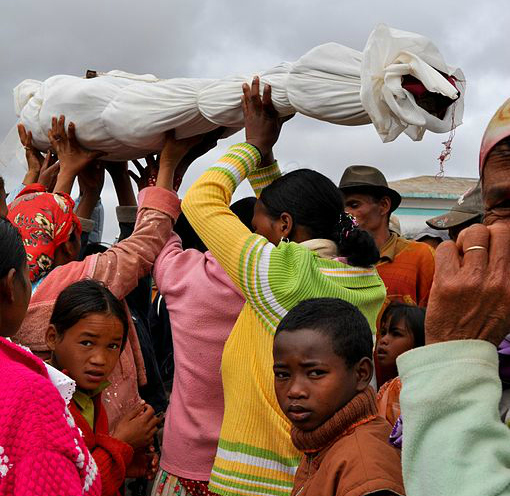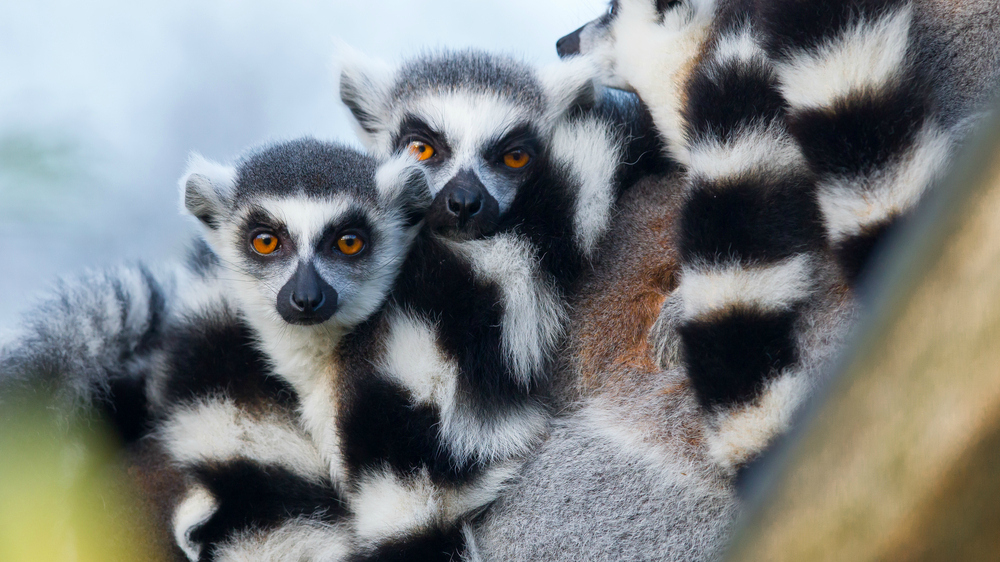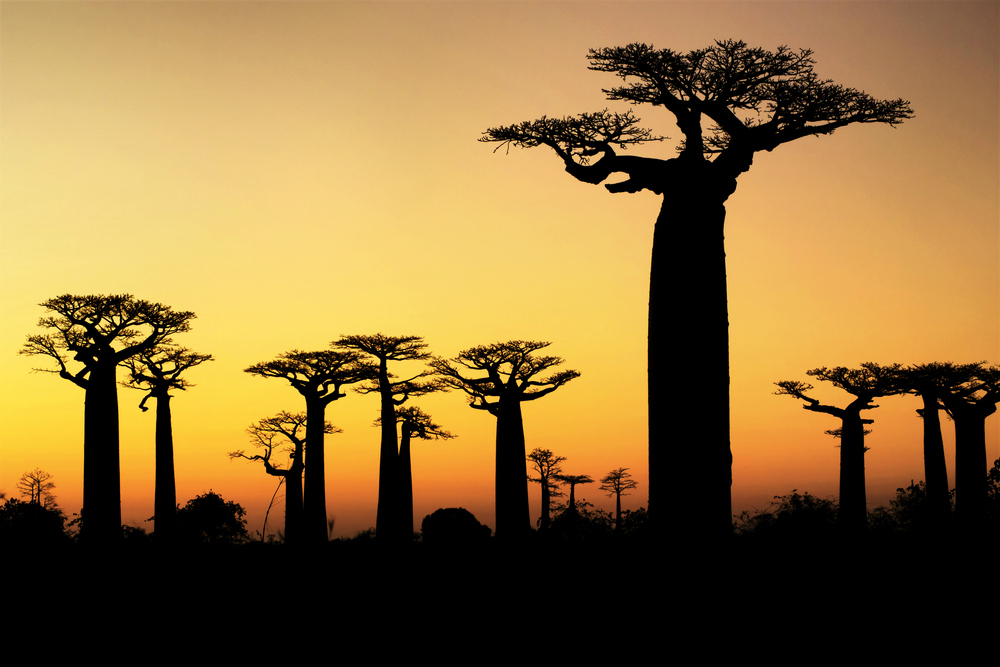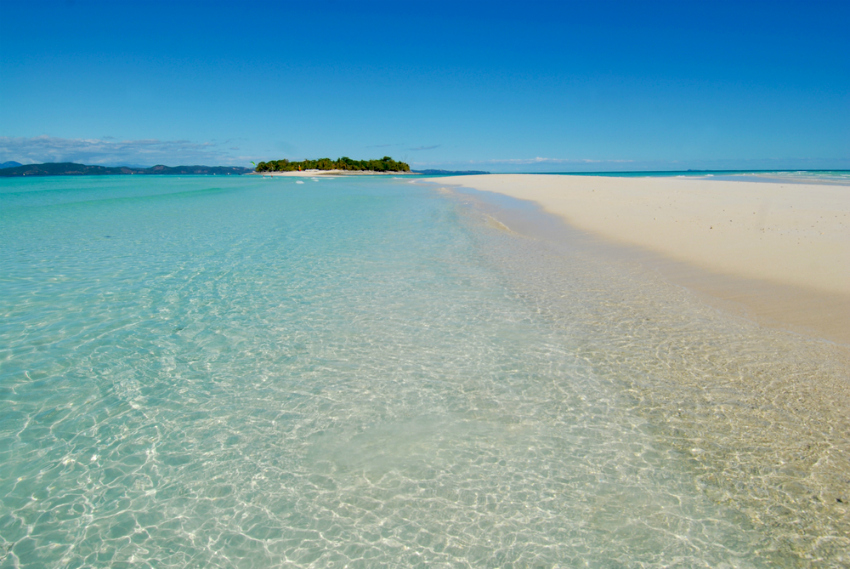For travelers seeking a truly unique and off-the-grid adventure, Madagascar is an eco-tourism destination like no other. From spiny octopus trees to 1,000-year-old bobble-head baobabs, vanilla pods and rock-spindle forests to big-eyed lemurs and fuzzy-tailed sifakas, the world’s fourth-largest island is like no other place on earth. Here are 10 weird and wonderful facts about Madagascar, a fascinating and worthwhile vacation destination.
This article originally appeared on AFKInsider.com.
1. It’s been evolving on its own terms for 165 million years
Cast adrift from Africa 165 million years ago, this Noah’s Ark in the Indian Ocean has been evolving on its own terms ever since. As a result it features some incredibly diverse and unique geography – this is a place where you can go from just above freezing in a cloud forest edged by volcanic mountains to just below scorching temperatures in the desert less than 300 kilometers away.
2. The people don’t consider themselves African
Although geographically Madagascar is still a lot closer to mainland Africa than Asia, its people are not — they refer to themselves as Malagasy, not African. Descended from Indian and Malaysian seafarers who discovered this island paradise two millennia ago and never left, the Malagasy people have developed their own culture and traditions over the centuries, many of which are similar to Southeast Asia — rice is the staple food, eaten three times a day, and the Malagasy language has Asian roots.
3. Dancing with the dead isn’t frowned upon
Many Malagasy are practicing animists, with a culture of richly magical customs. You’ll still witness families in the central highlands dancing with their dead relatives during the ceremony known as Famadihana, which literally means “turning of the bones.” In Madagascar, death is not viewed as a negative or finality. It is simply a transition to a different form, and the Malagasy speak to their dead as if they are still alive.
4. It’s the world’s fourth-largest island
With more than 5,000km of coastline and measuring 1,600km from head to toe and 570km across at its widest point, La Grand Île is the world’s fourth-largest island, only surpassed in size by Greenland, Papua New Guinea and Borneo. Yet despite the long distances, according to the World Bank Indicators only 11 percent of the country’s 30,968 miles of pavement are actually paved. Locals still rely heavily on oxen carts for transport.
5. 90% of its flora and fauna can’t be found anywhere else
Madagascar has flora and fauna that can only be found here. This includes 346 reptile species found nowhere else. The world’s largest (Parson’s) and smallest (dwarf of Brookesia) chameleons both call the island home. There have also been more than 70 species and sub-species of lemurs identified in Madagascar, with the newest species discovered in 1985. Sadly 16 species have become extinct since humans arrived. Unique plant life is equally prolific with 6,000 endemic types including spiny octopus trees.
6. If you don’t speak Malagasy, you’ll need to speak French
Named by Marco Polo — the first European to discover the island in the 1500s — Madagascar was colonized by the French in the late 19th century and gained independence in 1960. Today French culture still influences the cuisine. Expect to have a fresh baguette served at breakfast in even the smallest towns. French architecture in both the capital city of Antananarivo and nearby Antsirabe has good representation. Hardly anyone speaks English, so if you don’t know Malagasy, you’d better have a basic grasp of French to get around.
7. 75% of the world’s baobabs exist only in Madagascar
There are only eight species of baobab trees in the world. One is found in Australia, one in mainland Africa and the other six only in Madagascar. For the most photogenic baobab moment, head to the wild west country around Morondava. There you’ll find the famed Avenue de Baobab, where two dozen trees rising up to 90 feet in the air line the dirt path heading to Belon’i Tsiribihina.
8. Some national parks see less than 100 visitors a year
As one of the world’s poorest countries, Madagascar has never had a lot to spend promoting tourism. Throw in a politically iffy regime and the high cost of travel to, and within the country, and you’ll quickly understand why you just might have the island to yourself when visiting. In fact, some national parks here see less than 100 visitors per year, according to Lonely Planet. If you make it, don’t miss Parc National d’Andringitra, where the landscape of rice paddies and towering volcanic peaks more closely resembles the steppes of Asia than Africa, and some of the best lemur trekking in the country takes place. Parc National de l’Isalo is also magnificent and a marvel of evolutionary processes, with an unearthly, sometimes eerie landscape that’s home to ringtail, brown and sifaka lemurs.
9. Madagascar has beautiful beaches and even a small resort scene
Home to abundant coral reefs and some 250 outer islands, Madagascar is a fantastic beach destination. Head to picture-perfect white sand-meets-turquoise-beaches on Nosy Be on Madagascar’s Northwest coast or Ile St Marie, off it’s Eastern shores for a beach bum experience – both host some of the best accommodation on the island and a small upscale resort scene catering mainly to French and Italian tourists. Also don’t miss out on what is in the sea – divers and snorkelers will dig the underwater diversity, including plenty of shipwrecks and sharks.
10. Half of the world’s vanilla supply is from Madagascar
The Malagasy are proud to supply half of the world’s vanilla. The country exports about 1,000 tonnes of the spice each year, and the product is vital to the country’s economy, representing 10 percent of its gross domestic product.
Related content on AFKTravel:
12 Reasons You Should Drop Everything And Visit Madagascar
10 Things That Surprise Foreigners About Madagascar
10 Foods From Madagascar That You Have To Try
Want to discover the finer side of Africa? Sign up for our weekly newsletter.










